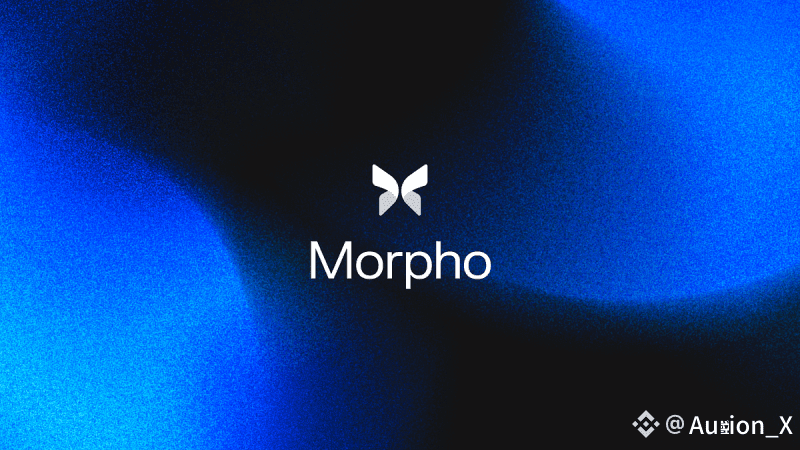Every once in a while, a protocol releases an upgrade that doesn’t just polish old features but actually shifts what the protocol is capable of becoming. Morpho V2 feels exactly like that moment—a real turning point, not just for the project itself, but for anyone paying attention to how the next era of decentralized lending might take shape. If Morpho’s earliest version proved that lending could be more efficient, V2 proves that lending infrastructure can be modular, programmable, and designed for builders, not just users.
What makes V2 so exciting is the philosophy behind it. Morpho isn’t trying to be a typical lending platform. It’s building the foundation for a lending ecosystem where anyone—developers, DAOs, institutions, advanced users—can create customized lending experiences using vaults, adapters, and transparent governance. Instead of keeping lending locked inside rigid templates, Morpho is giving the community tools to shape lending markets exactly as they want them to behave.
The introduction of smart-contract vaults is where this transformation begins. These vaults aren’t just passive containers—they behave like programmable lending environments. Developers can tailor them for different strategies, risk models, or liquidity structures. Users get more clarity and control. And the entire system becomes more composable, allowing lending to interact smoothly with the rest of DeFi. The idea that lending can be modular isn’t new in theory, but Morpho is one of the first protocols to execute it in a way that feels both powerful and intuitive.
Then there are the adapters—arguably one of the most underrated upgrades in V2. Adapters allow Morpho vaults to plug directly into external DeFi protocols. This means Morpho isn’t just optimizing lending markets anymore; it’s extending itself into the broader on-chain ecosystem. Liquidity can flow into strategies that weren’t previously accessible. Vault creators can integrate with new protocols without rebuilding everything from scratch. And users benefit from more dynamic, competitive, and tailored environments. It’s a major step in turning Morpho into a hub that connects multiple layers of DeFi into a unified experience.
The ForceDeallocate feature adds another layer of user-centered design. If you’ve spent time in DeFi, you know the pain of trying to withdraw during tight liquidity conditions. V2 solves that with a withdrawal mechanism that gives users more reliability and confidence. It’s a subtle feature, but an important one—especially as vault designs grow more sophisticated.
Governance has also matured in a way that reflects Morpho’s long-term vision. By strengthening on-chain governance, V2 reinforces transparency and decentralization. The community gains more direct influence over how vaults operate, what features evolve, and how the protocol adapts to new environments. It’s not governance for show—it’s governance built into the core architecture of the protocol. As Morpho grows, this matters more than ever. You can’t build infrastructure for the long term without distributing decision-making power and creating a robust, open framework for change.
Maybe the most interesting part of this update is not the individual features, but how they work together. V2 doesn’t feel like a patchwork of ideas. It feels like a coherent shift toward an ecosystem where lending is flexible, efficient, and open to innovation. Developers get tools. Users get efficiency. The community gets control. And the broader DeFi space gets a protocol that pushes the envelope of what lending can be.
You can already see the excitement building around it. On Binance Square, on X, across crypto communities—people are paying attention. Builders are talking about using Morpho vaults in creative ways. Liquidity providers are exploring the yield pathways that adapters unlock. Governance participants are preparing for a more meaningful role in shaping the protocol. It feels like Morpho has hit a turning point where it’s no longer just “another lending platform,” but rather a key piece of on-chain infrastructure for the years ahead.
What stands out most is how all of this aligns with Morpho’s core identity. From the very beginning, Morpho set out to solve inefficiencies in lending markets. But with V2, it’s doing more than optimizing—it’s redefining the blueprint. Lending doesn’t have to be a one-size-fits-all product. It can be modular. It can be programmable. It can be structured to serve advanced strategies, institutional flows, new asset types, and innovative builders—all while remaining transparent and decentralized.
As the DeFi landscape evolves, the protocols that will last are the ones that adapt, innovate, and empower their communities. Morpho V2 is a clear statement that the team understands this deeply. It’s not just an upgrade—it’s an invitation to build, to experiment, and to push the boundaries of on-chain finance. And judging by the momentum around the project, that invitation is being accepted.




